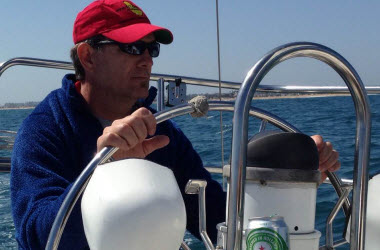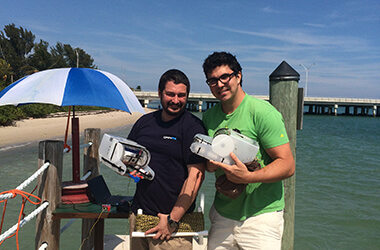January 19, 2016
As I sit in my office working through over 250,000 thousand data points on reef fish from East Africa collected from a major expedition two years ago, I take time to reflect on one of the most amazing experiences of my life. One that had the team and myself in numerous situations that we’d planned for but didn’t expect to come to pass. These included dodging dynamite fishers, experiencing the pulse of a dynamite blast or two underwater, epic storms, rescuing local fishers from being lost at sea, and rescuing ourselves when sudden squalls descended upon our dive team and we would lose all topside visibility.
East Africa is one of the most stunning coastlines on the planet, and we were there to survey its entire length using stereo-video cameras to obtain data on reef fish diversity, abundance, and length of fish. As we headed south and crossed into Mozambique waters, we’d been hoping that the weather would allow us to cruise way offshore to a seamount known as St. Lazarus banks. This seamount rises up from around 2000 m of water to an average depth of about 20 m across its plateau.
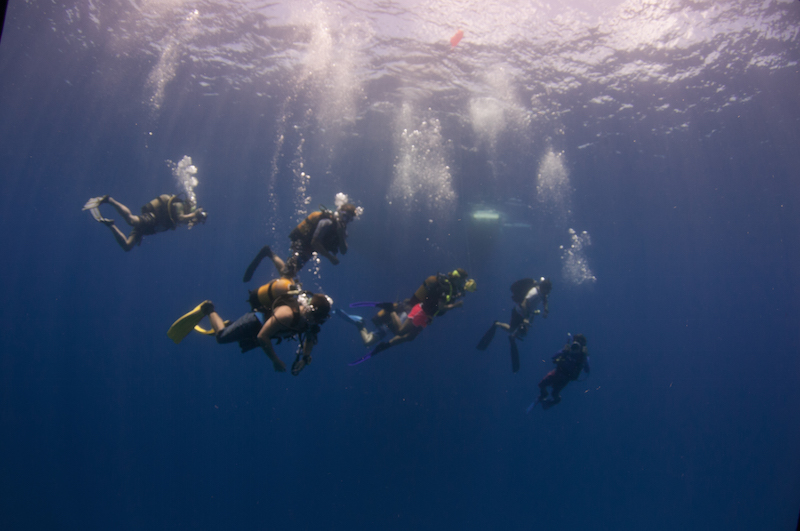 The weather played to our favor, and the night before arriving, we made the decision to cruise offshore. We woke in the morning to crystal clear water allowing us to see the bottom with absolute clarity. It felt as if we could see forever through the water. The topside conditions were equally as splendid. There was not a breathe of wind, the swell was non-existent, and the skies were clear – the most perfect conditions you could get on the ocean, especially nearly 100 nautical miles from the coast.
The weather played to our favor, and the night before arriving, we made the decision to cruise offshore. We woke in the morning to crystal clear water allowing us to see the bottom with absolute clarity. It felt as if we could see forever through the water. The topside conditions were equally as splendid. There was not a breathe of wind, the swell was non-existent, and the skies were clear – the most perfect conditions you could get on the ocean, especially nearly 100 nautical miles from the coast.
We were nearing the end of our four-month research journey. This sojourn to a rarely visited part of the ocean was a celebration of our success so far, the teams’ camaraderie and enduring spirit, and a unique experience for each of us. Part of the day’s visit was to relax in the crystal clear water and then go for a dive without the burden of conducting any science surveys. Unlike other days, the two dive teams were going to dive together. That meant there were going to be seven of us, including one of the first mates. The only people remaining on deck were the two other mates, the chef, and the captain. The dive was spectacular – untouched coral, amazing fish diversity, and visibility forever. We all enjoyed the relaxed nature of the dive and having the opportunity to look a little closer at the smaller critters rather than usually rushing over the top with the survey cameras.
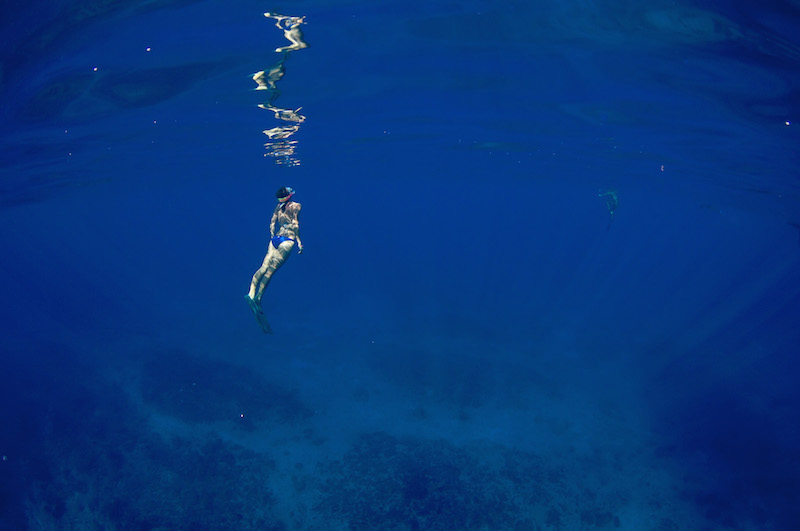 Amidst all this relaxing, the anchor chain started to move. As we all looked at each other slightly bemused, one of the mates free-dived down to encourage us to get to the surface. Most of us had an idea of what this meant, but we couldn’t rush to the surface as our maximum dive depth ensured we’d need to do a safety stop. Especially being nowhere near any help in the event of one of the divers experiencing the bends. Our dive safety margin was always paramount and adhered to because of our consistent isolation along the coast.
Amidst all this relaxing, the anchor chain started to move. As we all looked at each other slightly bemused, one of the mates free-dived down to encourage us to get to the surface. Most of us had an idea of what this meant, but we couldn’t rush to the surface as our maximum dive depth ensured we’d need to do a safety stop. Especially being nowhere near any help in the event of one of the divers experiencing the bends. Our dive safety margin was always paramount and adhered to because of our consistent isolation along the coast.
As our dive computers cleared us from the safety stop, we all lined up behind one another on each side of the catamaran to get on board as quickly as possible. By that time the boat was free of anchorage and idling. Mike and I were the last two on deck, and as soon as we were clear of the water, the captain engaged the boats twin 275 horsepower engines and didn’t hesitate to get going.
Up on the bridge, the captain informed us of a suspect vessel off our port stern about two nautical miles away. It maintained a direct heading toward our vessel, and made no radio contact with us. As we increased our speed, we altered our course to see if the suspect boat would maintain it’s heading or follow us. To our surprise, it followed us. This was the scenario we had each played out in our own minds and in group discussions. Pirates!
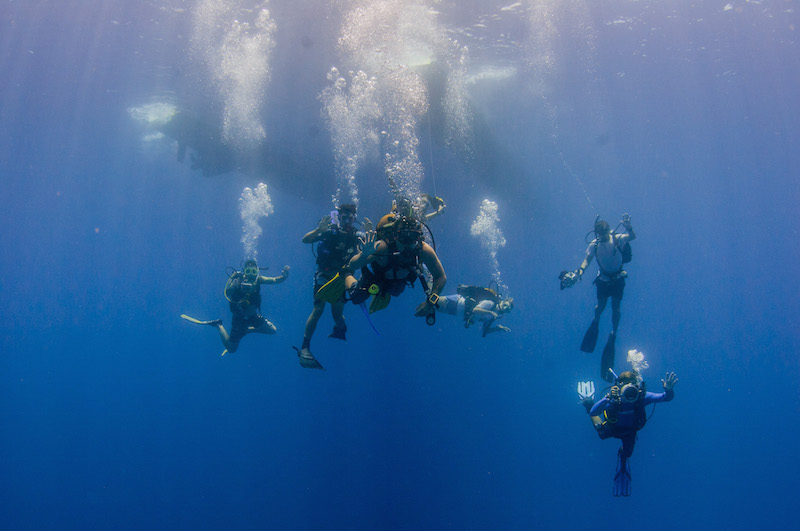 Two weeks prior to this, we’d met a former captive of pirates while in Dar el Salam, Tanzania. He’d been held captive for two years following the capture of the private yacht he was skippering. Knowing that piracy was a real threat to our safety, and learning from a first-hand account, we were all on edge. As the suspect vessel kept bearing down on us, our captain kept increasing the speed. We knew we had an advantage as our boats speed could hold a steady 25 knots for many hours, especially since we’d recently refueled our 4,500-gallon fuel capacity. But 25 knots is no match for smaller, faster vessels that they would be likely to launch when in range. These small ‘skiffs’ can top 40 or 50 knots and be next to us in less than a few minutes. If that were the case, we’d have no way to defend ourselves. The plan was to get as low as possible in the middle of the boat and hope they couldn’t board a fast moving vessel like ours, and eventually they would run out of fuel in the chase.
Two weeks prior to this, we’d met a former captive of pirates while in Dar el Salam, Tanzania. He’d been held captive for two years following the capture of the private yacht he was skippering. Knowing that piracy was a real threat to our safety, and learning from a first-hand account, we were all on edge. As the suspect vessel kept bearing down on us, our captain kept increasing the speed. We knew we had an advantage as our boats speed could hold a steady 25 knots for many hours, especially since we’d recently refueled our 4,500-gallon fuel capacity. But 25 knots is no match for smaller, faster vessels that they would be likely to launch when in range. These small ‘skiffs’ can top 40 or 50 knots and be next to us in less than a few minutes. If that were the case, we’d have no way to defend ourselves. The plan was to get as low as possible in the middle of the boat and hope they couldn’t board a fast moving vessel like ours, and eventually they would run out of fuel in the chase.
Minutes passed in the cat-and-mouse game, until our speed was too much for the suspect vessel to remain in touch with us. The captain didn’t ease up until we were in sight of the coastline. We navigated into the Quirimbas Archipelago, and hid our vessel behind a series of islands. It was a tense night knowing that if they had radar, and were in fact pirates, they could easily have searched for us. As the sun went down and we were at anchor, we implemented an all lights out policy for the night to reduce the risk of being spotted amidst the darkness of an unpopulated coastline and moonless sky.
The morning arrived, we were alone, and at last we could relax. That day we stepped right back into our research roles and got to work. The remaining couple of weeks went smoothly and without interruption. A successful expedition with everything a good adventure should have. We’ll never know if the vessel was in fact a pirate boat. If it was, the entire team and I might still be in captivity. A good rule of thumb – don't wait around to find out if they are pirates!

